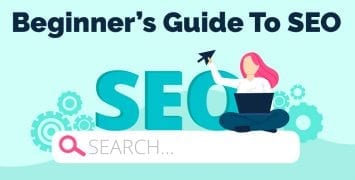As an SEO pro, you probably have a lot of tools in your toolkit. Part of creating an effective SEO campaign is knowing which tools you need, and which you don’t. This lets you adjust each SEO campaign for the specific needs of the business and their clientele.
SEO can be divided into two main categories:
On-Page Optimization
These are the SEO practices which happen directly on your site or blog.
Off-Page Optimization
These are the SEO practices involving Backlinks, tracking, social media and other SEO practices which do not occur directly on your site.
Many people try to do both at once, but this usually a mistake. Instead, I’ve found that the best results occur when you focus on On-Page optimization first. This allows you to create a solid foundation which you can then build upon.
A site with a strong foundation will generate search traffic due to an increase in organic rankings. This will always help your brand. Plus, when your on-site optimization is solid, you can experiment with different types of off-site optimization without risking your existing traffic flow.
Here are four great tips for on-site optimization:
1. Use Analytics
In order to know where your site is going, you need to know where you’ve been. Google Analytics is a way to track who is visiting your site and where they’re coming from. You’ll be able to determine if site traffic is:
- Organic
- Direct
- Referred
- PPC
This allows you to refine your content to target your audience. Even better, this allows you to notice emerging trends in traffic as they develop. This helps prevent problems before they start as well as allowing you to fully capitalize on any trends.
2. Optimize for Local Search
No matter what product or service you provide, you want to emphasize the physical location of your business. This because Google places a major emphasis on local search results. You’ll want to incorporate local place names and terms into the content of your site.
This especially important for mobile optimization. Roughly half of all mobile searchers are conducted by someone who is looking for a service within their immediate vicinity.
Mobile users want to know specific information such as:
- Office hours
- Office phone numbers
- Physical address (including a map)
3. Add Visuals
Well-crafted written content is a cornerstone of effective SEO. But it’s not the only way to present information. You want to spice up your local content with visual media. This can be:
- Photographs (of products or even your friendly employees)
- Graphics (charts, infographics, cartoons and illustrations)
- Videos (How-to, behind-the-scenes and more)
The best type of content provides information to your users. Some people prefer to read while others prefer to watch or listen. By adding visuals to your written content, you’ll reach the widest possible audience.
4. Create Content Readers Want
Too often, content is created with marketing in mind. This can lead to stiff, awkward blog posts and web pages where you fail to connect with your audience. Instead, you should create your content based on what your audience wants to know about.
Social media is a great place to learn about the needs of your target audience. Pay attention to the comments on your social media platforms. What do your users like about your product or service? What do they dislike? What are they confused about?
Also check out your competition. What are they excelling at and where do they come up short? Creating blog posts which provide simple solutions to common problems in your industry helps draws in traffic while establishing your brand as an authority.
Final Thoughts
Implementing the best SEO practices can seem overwhelming at times. New content will always need to be created. Traffic will always need to be analyzed. The needs of your target audience will always need to be determined, and those needs will change, sometimes quickly.
When you use on-site SEO techniques to create a solid foundation, you’ll be setting your site up for success. Find out what information your readers want and then deliver that information in a variety of ways including both visually and by text. Also, don’t forget to emphasize local information such as Name, Address and Phone Number.
On-site optimization is one of the most important aspects of a successful SEO campaign. Do you agree? Share your thoughts in the comment section below:





